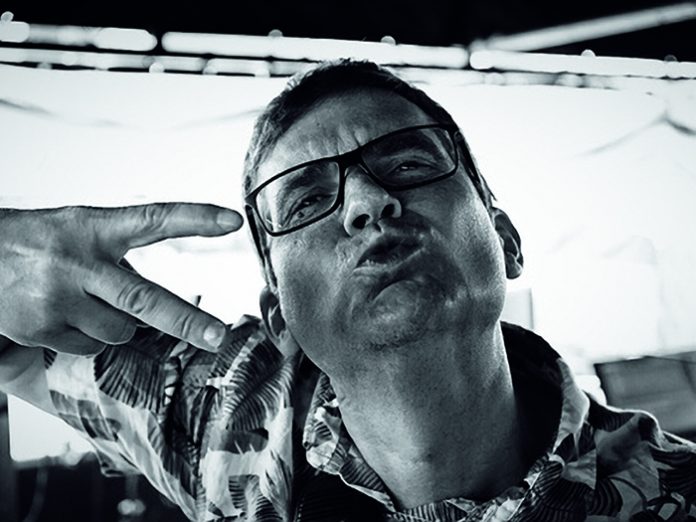How did you enter the live events industry?
I remember spending summers in a tent at the local hippy festivals helping with site, lights and generators, building a PA for local bands and theatre, running the technical side
of the school drama studio when in the 6th form. I spent a week at Roundel Productions, a corporate production company with in-house facilities during my 18th summer
demonstrating enthusiasm which resulted in a floor sweeping job a few months later. Almost roadying…
What sparked your interest in the world of video?
I have always been fascinated by images. I have early memories of playing with my dads slide projector and his transparency collection from the days of his army service
in Cyprus, including the drive home from there. Tin foil in slide mounts making gobos. Shining the beam through cut glass fruitbowls with all the curtains drawn.
What do you remember from those days?
The school photography club printing black and white in the darkroom. One of the first things I got into at Roundel was “audio visual programming”. This was an Apple 2e reading time code from a 4 track tape deck and fading multiple slide projectors up and down. Those rigs could get to 50 projectors or more across very many screen areas. Still, early 80’s so practically no video on site, which is what made the deeply painful process economically viable. From Roundel to Molinare which was one of the very few video facilities companies around then to work in the AV department there. We all left to form the AV Department Ltd then a few years later until I went freelance.
What was your first foray into the world of video?
My first real roadie job was Depeche Mode’s Devotional tour in ‘93/94. Revolutionary in its use of 9 of the first practical touring Barco 5000 projectors fed by CRV laser discs and a Dataton PC control system, which read timecode from Wob Roberts digital 24 track machines. Wob and Liz Berry remembered my tour bus ramblings about what might be possible with multiscreen video and invited me to help out with Robbie Williams first arena tour in ‘98/99. 3D projection mapping worked out in autocad and photoshop, projector blending with gaffer tape. It is still my favourite method of static blending projectors. Chris Mounser then introduced me to Jonathan Park who was Roger’ Waters’ creative director at the time and we migrated the In the Flesh tour from 5k scrollers to stacked video projectors, simply because it was brighter. The rest is history…
How has Lucky Frog changed over the last few years?
The most significant development has been employing the amazing Ellie Clement who should have won the 2019 Des Fallon Video Visionary Award!
What is the biggest innovation in the live touring video over the last 10 years?
Laser light sources for projectors have provided previously unheard of brightness and reliability.






